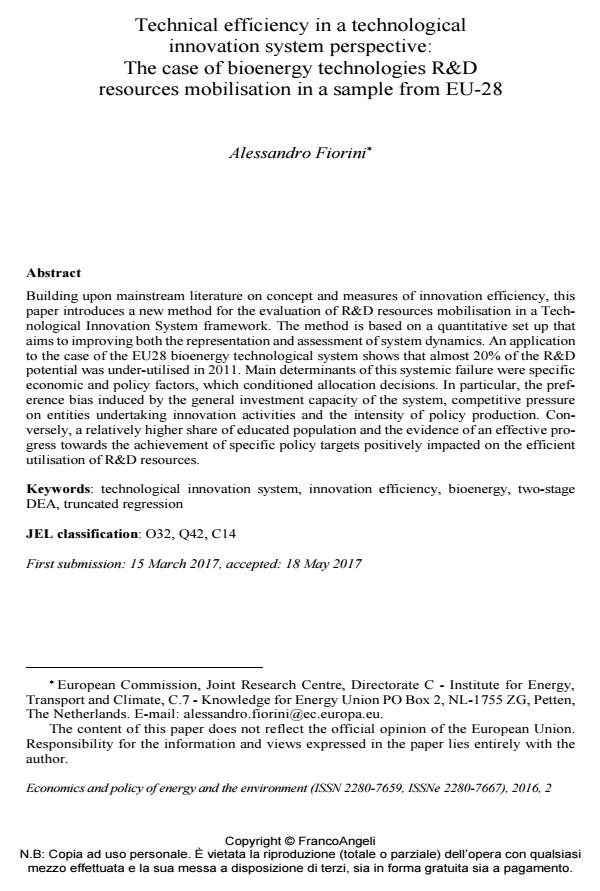Technical efficiency in a technological innovation system perspective: The case of bioenergy technologies R&D resources mobilisation in a sample from EU-28
Journal title ECONOMICS AND POLICY OF ENERGY AND THE ENVIRONMENT
Author/s Alessandro Fiorini
Publishing Year 2017 Issue 2016/2
Language English Pages 21 P. 107-127 File size 262 KB
DOI 10.3280/EFE2016-002006
DOI is like a bar code for intellectual property: to have more infomation
click here
Below, you can see the article first page
If you want to buy this article in PDF format, you can do it, following the instructions to buy download credits

FrancoAngeli is member of Publishers International Linking Association, Inc (PILA), a not-for-profit association which run the CrossRef service enabling links to and from online scholarly content.
Building upon mainstream literature on concept and measures of innovation efficiency, this paper introduces a new method for the evaluation of R&D resources mobilisation in a Tech-nological Innovation System framework. The method is based on a quantitative set up that aims to improving both the representation and assessment of system dynamics. An application to the case of the EU28 bioenergy technological system shows that almost 20% of the R&D potential was under-utilised in 2011. Main determinants of this systemic failure were specific economic and policy factors, which conditioned allocation decisions. In particular, the preference bias induced by the general investment capacity of the system, competitive pressure on entities undertaking innovation activities and the intensity of policy production. Conversely, a relatively higher share of educated population and the evidence of an effective progress towards the achievement of specific policy targets positively impacted on the efficient utilisation of R&D resources.
Keywords: Technological innovation system, innovation efficiency, bioenergy, two-stage DEA, truncated regression
Jel codes: O32, Q42, C14
Alessandro Fiorini, Technical efficiency in a technological innovation system perspective: The case of bioenergy technologies R&D resources mobilisation in a sample from EU-28 in "ECONOMICS AND POLICY OF ENERGY AND THE ENVIRONMENT" 2/2016, pp 107-127, DOI: 10.3280/EFE2016-002006